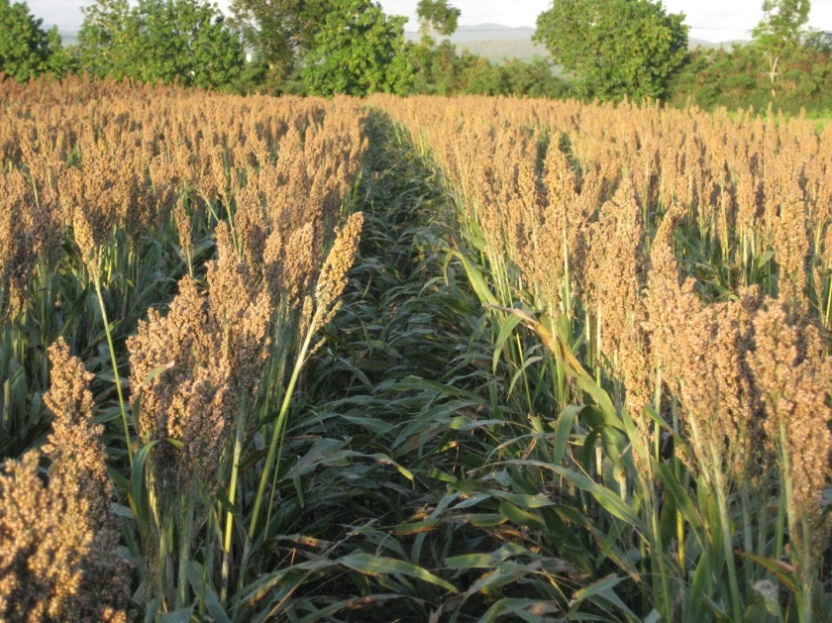Stable-Dwarf Sorghum
New stable-dwarf sorghum varieties
 Sorghum plant height is a quantitative trait controlled by four major genes (Dw1:Dw2:Dw3:Dw4). Nearly all of the grain sorghum grown in the developed world is produced using semi-dwarf cultivars. These cultivars commonly are called "3-dwarf" sorghum since they utilize recessive dwarfing alleles at three of the four major dwarfing genes (dw1:Dw2:dw3:dw4). Karper (1932) was the first to note that the dw3 mutation produced a useful dwarf phenotype, but also noted that dw3 was unstable and frequently reverted to wild-type Dw3. These plants are tall and generally referred to as "height mutants". Farmers dislike height mutants because these off-types are unsightly in commercial grain production fields. Commercial seed producers do not like height mutants because of the effort and cost required to rogue these plants from seed production fields. These management efforts increase the "cost-of-goods" and, in some cases, seed lots must be destroyed if the frequency of off-types is too high. A novel dw3 allele (dw3-sd2) with a 6-bp deletion in the coding region of gene has been identified. This new allele is being incorporated into elite sorghum parent lines for deployment in commercial hybrids.
Sorghum plant height is a quantitative trait controlled by four major genes (Dw1:Dw2:Dw3:Dw4). Nearly all of the grain sorghum grown in the developed world is produced using semi-dwarf cultivars. These cultivars commonly are called "3-dwarf" sorghum since they utilize recessive dwarfing alleles at three of the four major dwarfing genes (dw1:Dw2:dw3:dw4). Karper (1932) was the first to note that the dw3 mutation produced a useful dwarf phenotype, but also noted that dw3 was unstable and frequently reverted to wild-type Dw3. These plants are tall and generally referred to as "height mutants". Farmers dislike height mutants because these off-types are unsightly in commercial grain production fields. Commercial seed producers do not like height mutants because of the effort and cost required to rogue these plants from seed production fields. These management efforts increase the "cost-of-goods" and, in some cases, seed lots must be destroyed if the frequency of off-types is too high. A novel dw3 allele (dw3-sd2) with a 6-bp deletion in the coding region of gene has been identified. This new allele is being incorporated into elite sorghum parent lines for deployment in commercial hybrids.
